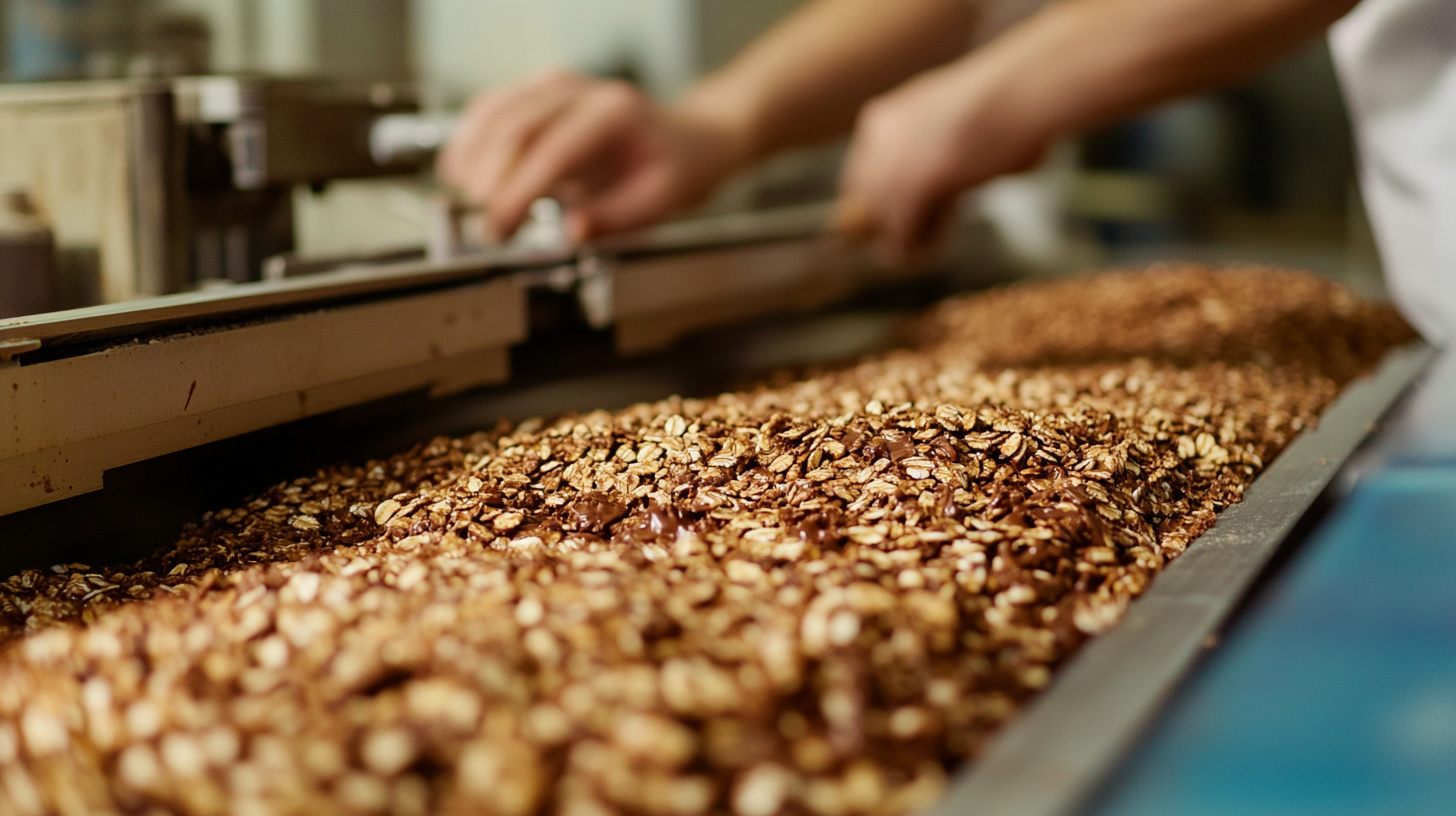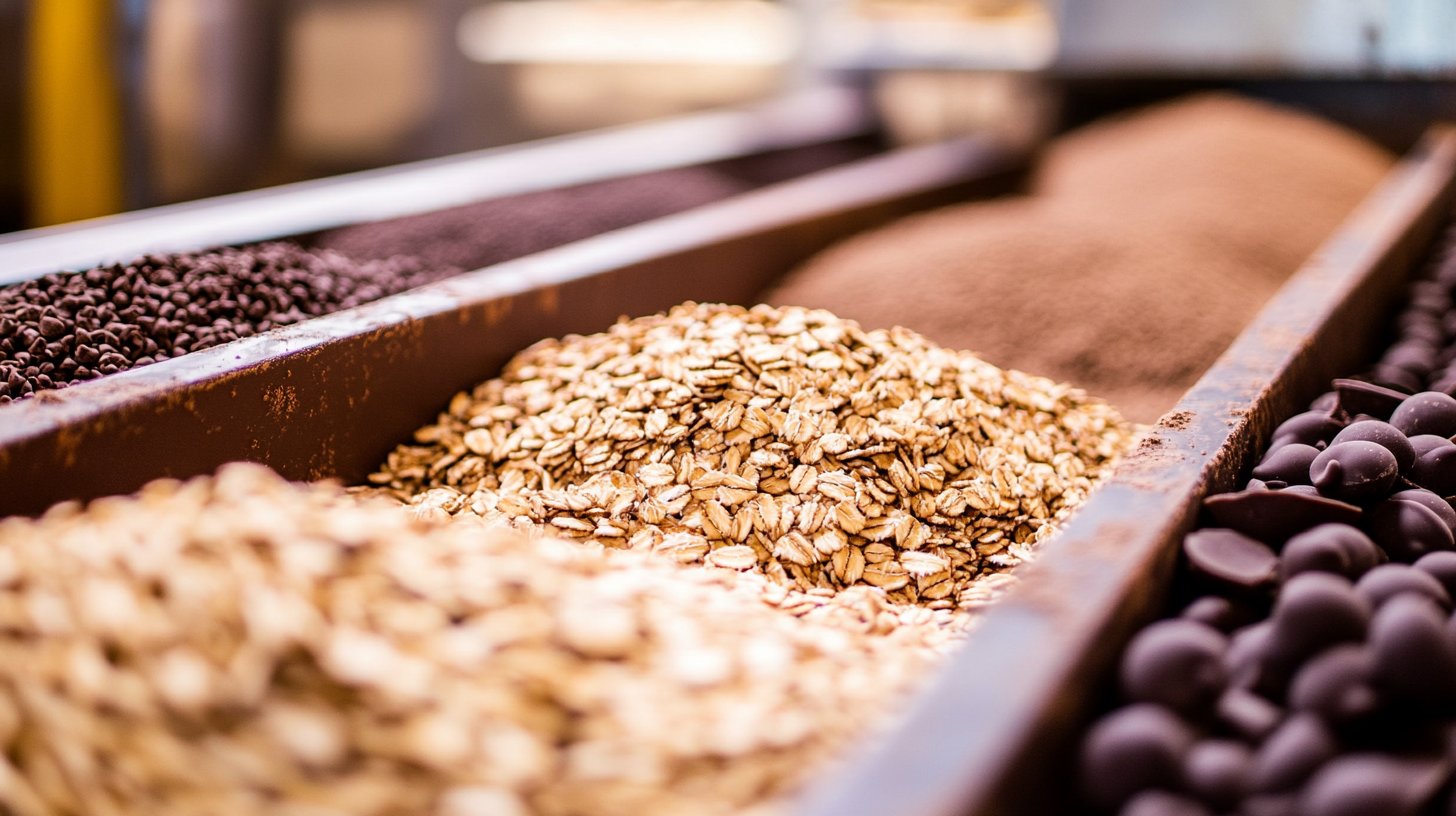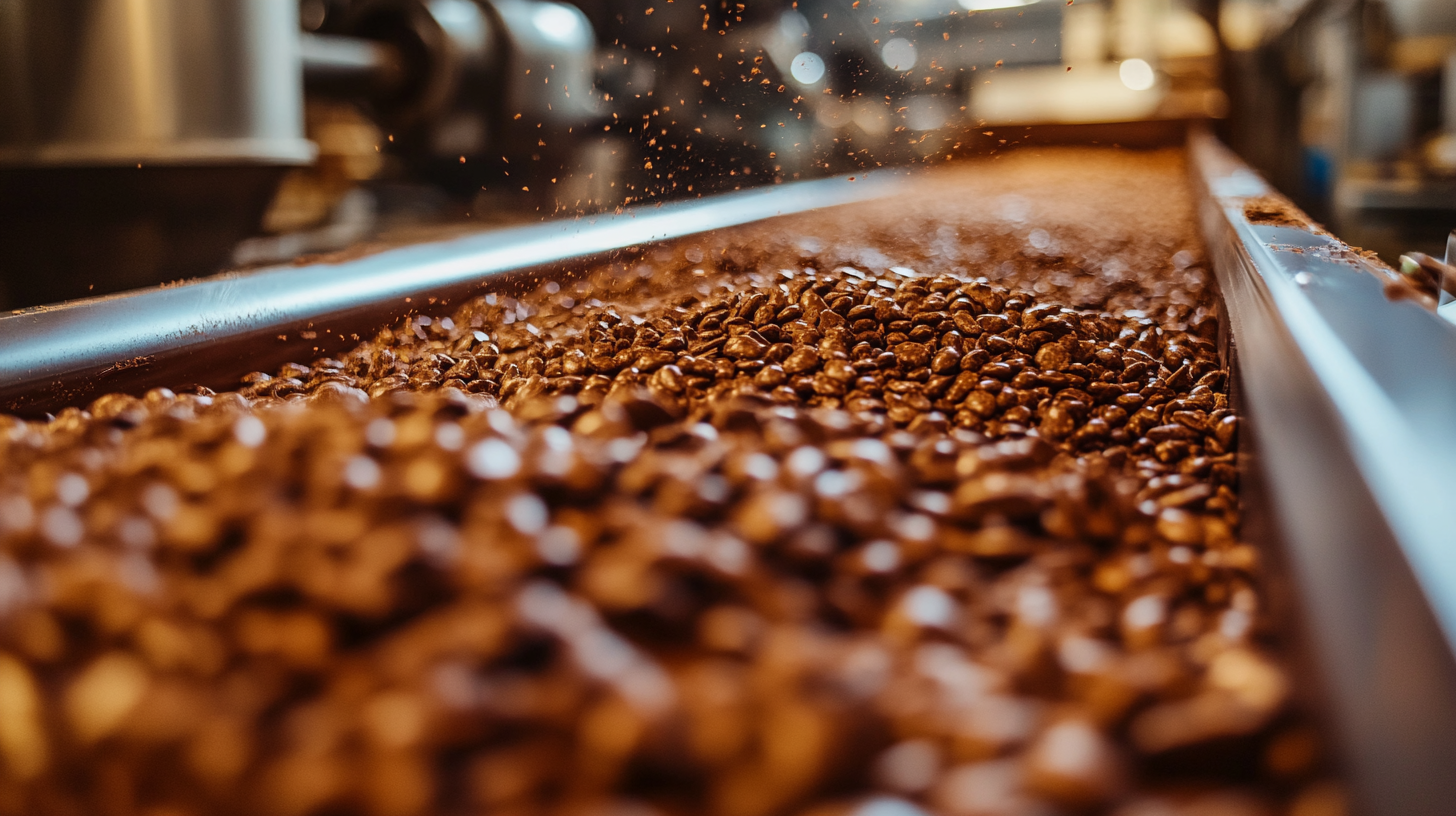Navigating Global Trade Standards for Oatmeal Chocolate Moulding Equipment
As far as any advanced mechanism is concerned, it is an asset for the demand of efficiency and quality within the candymaking industry. Not surprisingly, the rising demand for modern snacks has triggered a growing popularity for oatmeal chocolate moulding machines. In a report by Mintel, it has been forecasted that the chocolate market is set to gradually reach $160 billion globally by 2024, accounting for a significant share for oatmeal chocolate snacks, which are viewed as having health benefits. Hence, success requires great understanding of global trade standards that govern the use of such machinery, as they will provide manufacturers driving insight with technological breakthroughs in order to meet market trends. Considerable effort must be made to fully grasp these standards because they run parallel to vast differences in regulations among various countries. The food processing machinery market is projected to grow at a CAGR of 8.5% for 2021-2028; this lends credence to the importance of compliance in providing impetus for business growth. For the manufacturers of oatmeal chocolate moulding machines, compliance with those standards shall guarantee safety and quality of the product and at the same time grant an entry to international markets. This blog will concentrate on the most crucial global trade standards in the oatmeal chocolate industry and discuss how manufacturers may best make these standards work to improve their production capacity and competitiveness.

Understanding Global Trade Standards in the Oatmeal Chocolate Industry
Manufacturers and exporters aiming to compete favorably must understand the global trade standards as they relate to the rapidly growing oatmeal chocolate industry. This sector grows at a remarkable pace, with the global oatmeal market projected to be worth roughly $2.3 billion by 2025 (Research Report, 2020). Companies must now maneuver through various regulations and standards to ensure that the product is compliant and marketable. Trade standards that apply to the oatmeal chocolate business would hinge on many other factors, such as food safety regulations, labeling requirements, and quality control. For example, the Codex Alimentarius, under the FAO and WHO, provides an umbrella set of food safety and quality standards that a company must follow. Failure to observe these standards could mean enormous financial loss and even tarnish the brand in a competitive environment. Increasingly, states synchronize their statutes, making the exportation process easier. Nevertheless, manufacturers must adhere strictly to the requirement of each relevant jurisdiction. Also, advancements in technology and manufacturing processes impact trade standards. It is reported that automation and modern molding machines enhance production efficiency with product quality. In 2022, the global chocolate molding machinery market stood at about $1.1 billion, with an estimated growth of 6% CAGR till 2030 (Market Research Firm). The transition signals that the manufacturers are increasingly required to stay aligned with not only contemporary standards but also anticipated future regulations that will arise from innovations in this industry. As the future of the chocolate industry unfolds, businesses that actively engage with these standards would benefit the most.

Key Regulatory Entities Affecting Oatmeal Chocolate Equipment
Manufacturers of oatmeal chocolate moulding equipment must navigate the complex landscape of regulatory standards. Key regulatory players are involved in making sure the machinery meets safety, quality, and environmental compliance. In the U.S., the Food and Drug Administration (FDA) regulates food safety, including the machinery used in food production. Sanitation design principles are to be followed, whereby the risk of contamination is minimized. Basically, this has a lot of direct implications on the design and choice of materials used in the construction of oatmeal chocolate moulding machines.
On a global scale, organizations such as the International Organization for Standardization (ISO) and the European Committee for Standardization (CEN) have established an important framework affecting international trade in food processing technologies. For example, ISO 22000 lays down food safety management system requirements, and it is directly impacting the day-to-day operations of manufacturers. In markets with stringent regulations, compliance with these standards can present a considerable barrier to entry, which indicates that organizations have to remain well informed and flexible to meet the standards effectively.
According to data reported for the Food Processing Equipment Market, the world market for food processing machinery, including oatmeal chocolate moulding equipment, is expected to reach USD 93 billion by 2026 and has been driven by the growing consumer demand for processed foods. Hence, these manufacturers need to focus on innovation and also on framing the design of their machines regarding these regulatory entities. The products which comply with entities such as the FDA and ISO guidelines will have better safety and commercial chances in highly competitive markets.

Compliance Challenges for Manufacturers in International Markets
The condition for compliance makes it much more difficult for manufacturers of oatmeal chocolate moulding equipment to meet global trade standards. As these increasing demands for artisanal and healthy snacks become more challenging, compliance to a maze of international standards has increasingly become a necessity for these manufacturers. A report compiled by the International Food Standards Coalition indicated that about 65% of manufacturers find compliance with the different global safety standards their major hurdle in entering new markets.
One important aspect of compliance is ensuring that equipment adheres to the regional safety and sanitary standards. For example, the European Union's Regulations (EC) No. 852/2004 precisely includes very strict hygiene requirements for any food production equipment. Therefore, manufacturers will have to make investments in moulding equipment, not only from its design and functionality, but also in such a way that it will meet these stringent regulations. It has been reported in some recent industry statistics that penalties for non-compliance can reach above the level of $1 million, while it also reflects severe interruptions through the whole production line.
What is more, since packaging regulations differ across jurisdictions, it would add another dimension of complication. For instance, allergen and nutrition labeling requirements in North America are the purview of FDA; hence, manufacturers must keep their ears steady to the ground in understanding these frameworks while at the same time performing their production processes. Industry observers recommend an investment in compliance management software as a means of speeding up compliance with the regulations and ensuring manufacturers meet and exceed what is expected from them in the increasingly competitive global marketplace.

Innovative Technologies in Oatmeal Chocolate Moulding
State-of-the-art technologies have revolutionized the oatmeal chocolatemolding industries and improved productivity while enhancing product quality. Manufacturers of present-day are riding the high horse of modern equipment with temperature control system automation for assuring uniform results in compliance with trade standards across the world. From improved tastes and textures, these innovations also comply with the increasingly stringent regulations of food safety and quality.
One of the fascinating innovations in these moulding machines is integration of smart technology with them. Equipped with IoT capabilities, these machines enable the monitoring of production process data in real-time. Thus, problems are detected early and worked upon in a timely manner to maximize production while minimizing waste and downtime. In addition, such systems use artificial intelligence, which supports predictive maintenance, and lower operational costs with increased lifetime of the machines.
There exists a tendency towards sustainability in the production of oat chocolates. The moulding systems of today come with energy-saving technologies to eliminate as much as possible from their carbon footprint while at the same time increasing productivity. Resource-saving methods, biodegradable materials, and recycling incorporated within the production lines are becoming themes in which most manufacturers are incorporating action into their operations. The above will not only prove attractive for such consumers but also place them strategically in a very competitive international market.
Strategies for Successful Market Entry and Trade Adaptation
With all that said, entering the global market oatmeal chocolate moulding equipment would be strategic so much so that business navigates through the trade standards differently. First and foremost, local rules and compliance must be properly understood. Each region can have different health, safety, and quality standards that it must comply with and that may vary across countries. A proper survey must then be carried out to see how the host country has regulated importing products from other countries, so that companies will at least mind making any required changes to avoid expensive penalties and delays.
Besides compliance, there must also be established contacts that could be relied upon to understand the market better. Such contacts are instrumental in the understanding of market tastes, transportation complexities, or stretches of consumer behavior. Working with local authorities makes entry easier and ensures proper alignment in marketing strategies that speak to local audiences hence the improved reception of the brand.
Also, the financial aspect such as custom duties, tax, pricing policy, etc., is thus very significant to adapt into thee markets. Assessing cost structures by the companies is an imperative part of evaluation to maintain their competitive edge on the one side and effective product affordability on the other side. Most importantly, importing items or ingredients must also reduce import costs as well as boost local economy, thus, adding to a brand's goodwill. The interrelated holistic way of regulatory comprehension, partner collaborations, and financial prudence has the ability to withhold the complexity of new-market entry into the oatmeal chocolate moulding equipment industry.